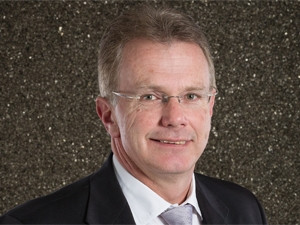
Andrew McNiven, HP South Africa industry standard servers category manager, says big data has moved beyond being a buzzword and the preserve of the financial and research sectors. "Now, every industry is starting to see the potential business value of being able to analyse and understand vast amounts of structured and unstructured data," he says.
"Big data is nirvana for marketers, for example, by allowing them to gain insights never before possible, and to engage with customers on a whole new level. We are seeing big data capabilities revolutionising business for HP clients abroad."
Nascar and HP http://www8.hp.com/us/en/business-solutions/nascar.html have collaborated to use big data to drive a one-of-a-kind Fan and Media Engagement Center to allow Nascar to track real-time media coverage and social media commentary. The solution gives Nascar the ability to track trends and fan interest, take action if necessary, and package comprehensive data for sponsors and drivers.
"This is just one example of the business opportunities big data can deliver," says McNiven. In countries like the US, big data processing demand is already driving increased uptake in high performance computing (HPC) solutions, with HPC already making up around 30% of HP's total server sales in the US. The market in South Africa is still relatively small, but is likely to follow suit, particularly when projects such as the Square Kilometre Array (SKA) drive up demand for unprecedented compute power - not just for the SKA, but also for related industries likely to spring up around the project."
McNiven says this growing demand for HPC prompted HP to bring to market new HPC solutions as part of its Generation 9 portfolio launched this quarter.
HP's Apollo 6000 system gives enterprises a building block approach to HPC, says McNiven, delivering a rack-level solution with the right compute for the right workload at the right economics. Compared to traditional systems, the HP Apollo 6000 system delivers up to 20% more performance for threaded applications, using 60% less space than a competing blade and achieving up to $3 million TCO savings over three years with 1 000 servers.
The new HP Apollo 8000 system is described as the world's first warm water-cooled supercomputer with dry-disconnect servers, delivering liquid cooling without the risk. HP says that because water cooling is 1 000 times more efficient than air, the system can pack amazing computational capability into a standard rack footprint and eliminates the need for expensive and inefficient chillers. This converged system has up to 144 x 2P HP ProLiant XL730f Gen9 Servers per Apollo f8000 Rack with plenty of accelerator, PCIe and throughput options to meet supercomputing workload needs. Compared to air-cooled systems, the Apollo 8000 system delivers up to 4 x teraflops per square foot, 40% more flops/watt and saves up to 3 800 tons of CO2 per year. McNiven highlights the US National Renewable Energy Laboratory (NREL) which has harnessed the energy efficient Apollo 8000 to gain an astounding amount of compute power to drive renewable energy research, while at the same time harnessing heat coming off the system to heat the NREL building, saving around $1 million a year in operations costs.
"In the past HPC has been a niche product area within HP," says McNiven. "But with the growth in big data and associated growing demand for greater compute capacity, we see this area growing strongly in future."
Share